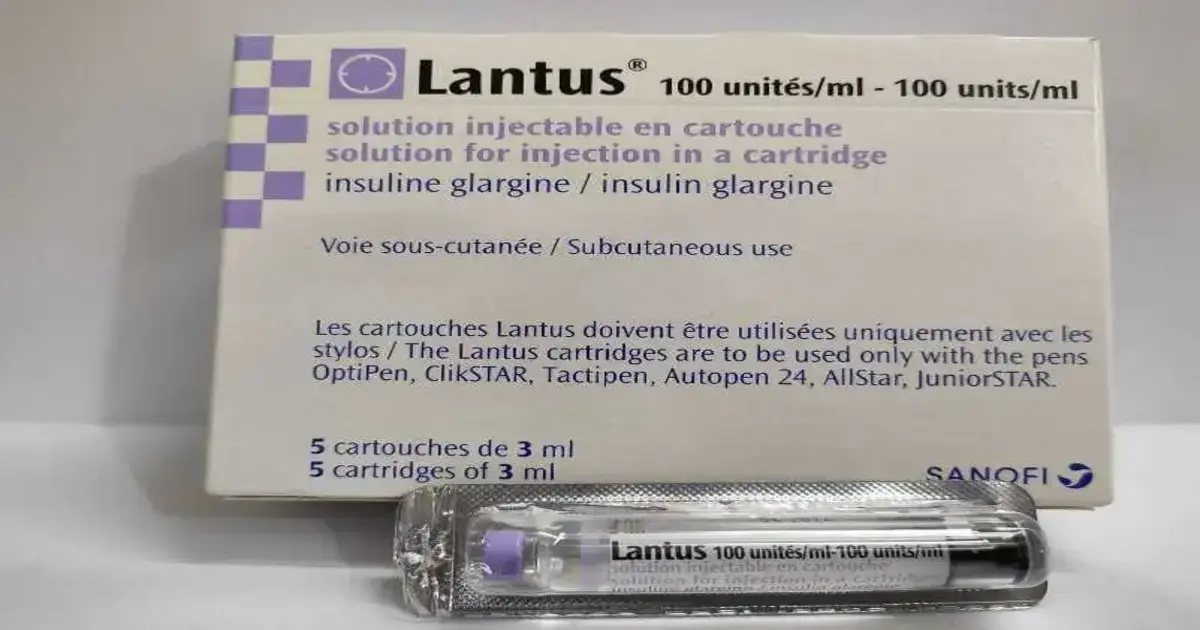Lantus is a reliable friend for people with diabetes who struggle to maintain healthy blood sugar levels daily. It’s an artificially synthesized form of this hormone that saves lives across the globe, and rightfully so because it helps in preventing or alleviating all adverse effects caused by high blood sugars that come from diabetes mellitus. This comprehensive guide will tell you what Lantus Insulin is, how to use it safely and effectively, and its role in your diabetes treatment plan.
Table of Contents
The Role of Lantus Insulin in the Management of Diabetes
The importance of insulin cannot be overemphasized when dealing with any type of diabetes. Without enough insulin being produced by our bodies (Type 1 DM) or not being utilized properly due to resistance developed even at adequate levels (Type 2 DM), glucose builds up in the bloodstream leading to hyperglycemia with long-term complications. So, what does this drug do? Simply put, Lantus replaces natural basal tall-acting insulins taken once daily but without pronounced peaks throughout their duration. They can work continuously for 24 hours, stabilizing patients’ conditions since everything else depends on this foundation.
What You Should Know About Lantus Insulin
- Referred to technically as glargine, it imitates actions of naturally occurring insulins when injected subcutaneously into fatty tissues where micro precipitates are formed, releasing the drug slowly over subsequent days up until twenty-four hours later into circulation, which results in decay profiles reflecting steady-state decrease blood sugar concentrations thus reducing risks associated with acute hypoglycaemic events or hyperglycaemic states.
- However, one thing should always be remembered: mealtime boluses must never be substituted by Lantus among individuals having type one diabetes mellitus unless otherwise directed by their doctors. Following prescription instructions exactly as stated may help achieve better control.
Safety precautions and warnings for the use of LANTUS SoloStar pens
Before commencing this regimen, there are some important safety issues that people should know. These include but are not limited to the following:
• Lantus should not be given during episodes of low blood sugar or high ketone levels in your urine, which is also known as diabetic ketoacidosis (DKA).
• One must never share their pen with others because it could lead to transmission of serious diseases such as HIV/AIDS virus, among other pathogens contained within contaminated needles used on different patients; hence, each individual requires their syringe filled separately every time they inject themselves.
• Different brands may have different strengths or types, which means changing from one insulin product to another can affect doses, making necessary adjustments according to healthcare professionals’ advice based on the patient’s response.
LANTUS is part of a wider diabetes management plan
- To cut the risk of mistakes or infection, prepare and give Lantus only when ready to do the shot. Watch for anything odd about the drug’s appearance, and ask your pharmacist if you notice something strange.
- Lantus is given as a subcutaneous injection. Do not put it into a vein or muscle or use an insulin pump.
- Rotate where you stick the needle to lessen skin problems and help make sure that insulin is absorbed evenly. Don’t inject into areas that are damaged, scaly, bruised, or have scars.
- You might have to eat more carbohydrates if you get low blood sugar. Talk with your doctor or diabetes educator about managing hypoglycemia.
Lantus in a Diabetes Treatment Plan
- In the big picture of diabetes control, Lantus insulin is just one part of a program that can include diet, exercise, other insulins, or oral medications. Use Lantus as part of a total treatment plan:
- Keep your daily routine steady because changes in mealtime, exercise, or insulin could reduce blood sugar levels.
- Talk openly with your doctor about what’s going on with your diabetes treatment plan. They may need to adjust as you change what you need and how you live.
- Take good care of how you keep Lantus so it works right. Store unopened insulin in a fridge or at room temperature (check the label) and use opened vials within the time recommended by the manufacturer.
- Check blood sugar levels as your health care team tells you to. Write down and tell them about any big shifts so they can help take care of your diabetes better.
For anyone working their way through the maze of diabetes knowledge, knowing Lantus insulin is crucial for success. By understanding its role within our body systems and following safety precautions carefully while integrating this powerful hormone replacement therapy into our lives effectively alongside other treatments such as dieting well and exercising regularly, people can manage their condition and live healthier futures.

